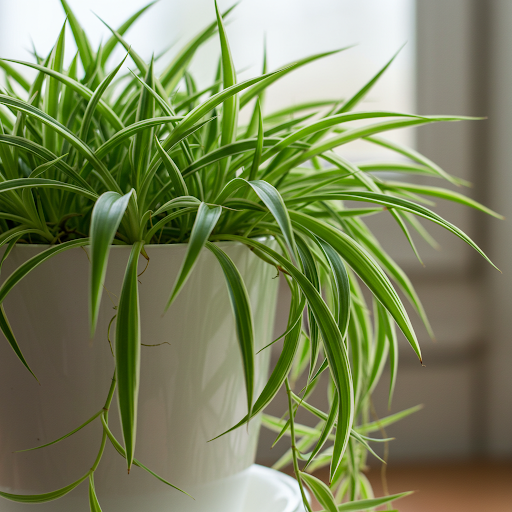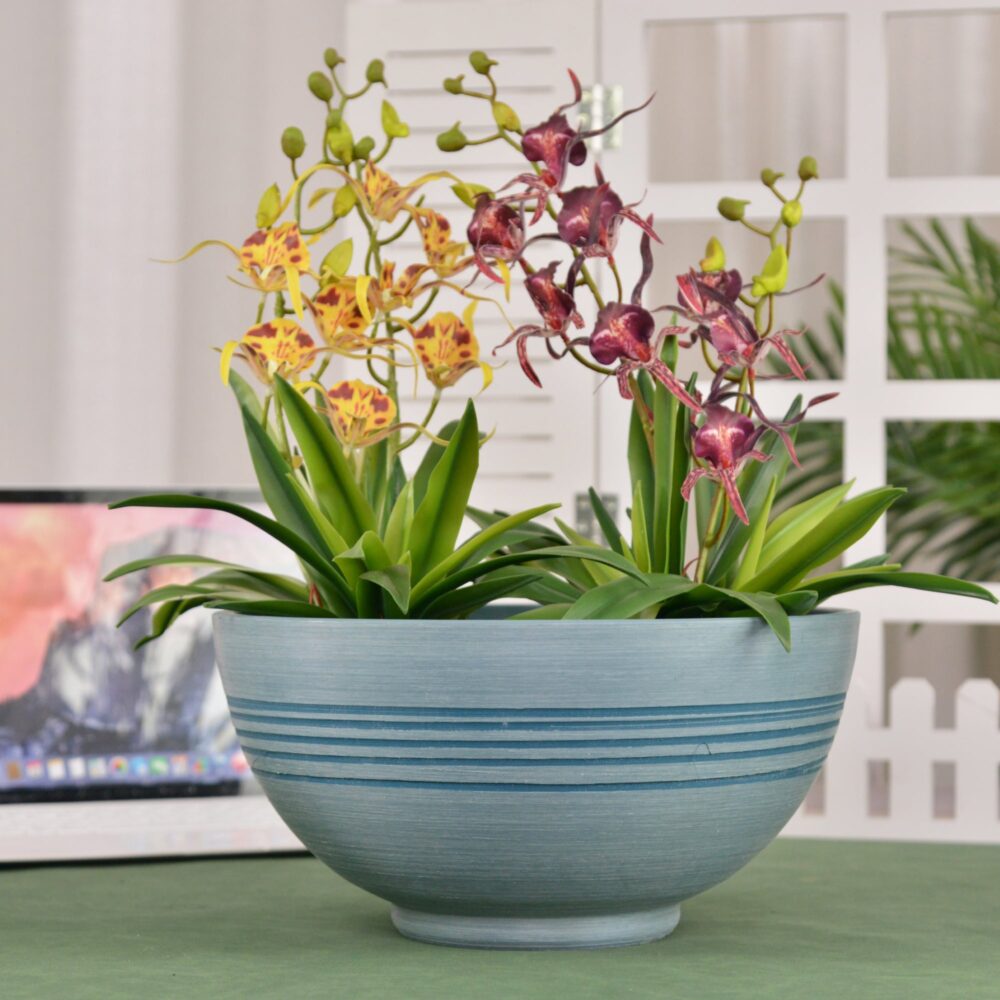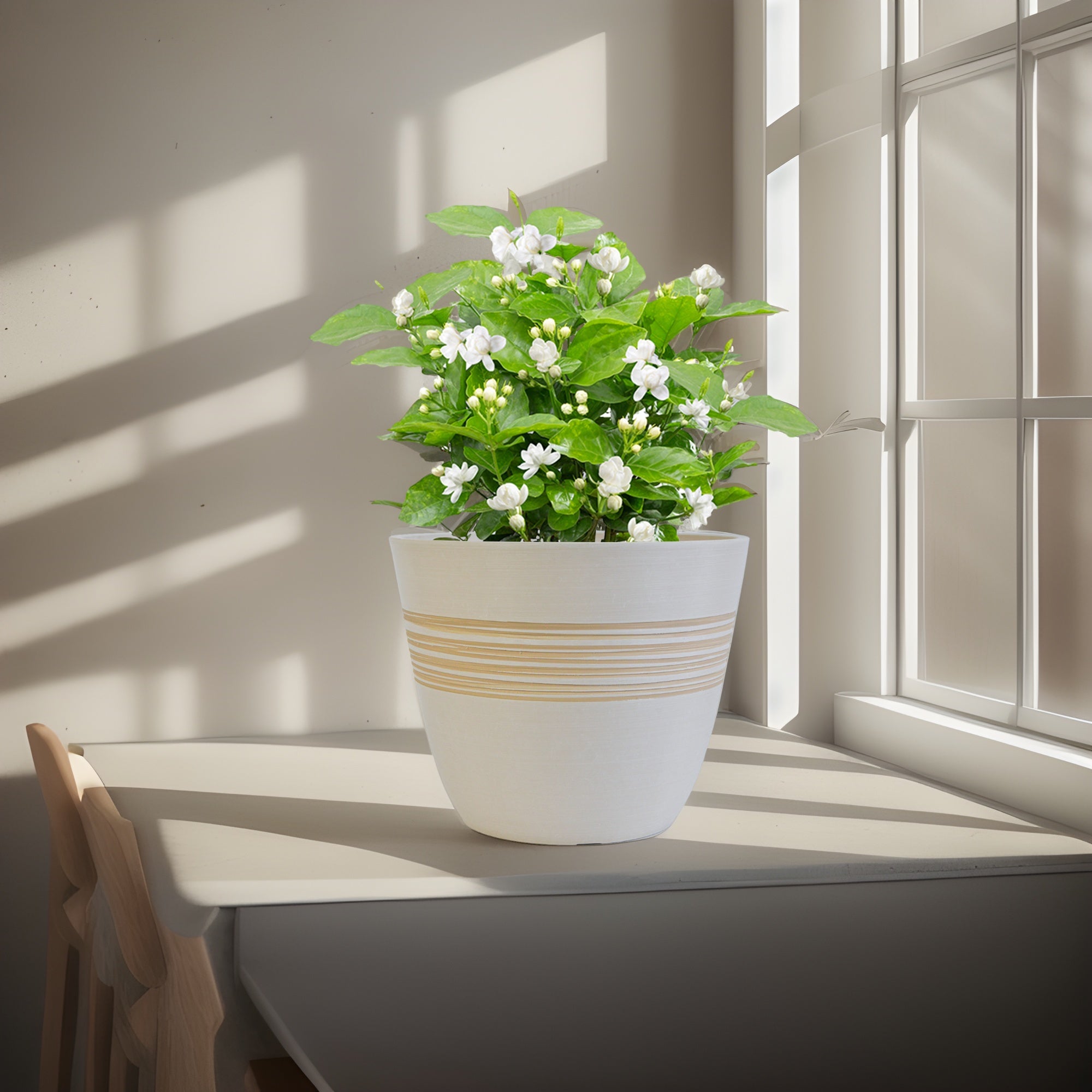Spider Plant (Chlorophytum comosum): The Complete Guide to Growing Indoors
Looking for an easy-to-grow, air-purifying houseplant that even beginners can master? Meet the Spider Plant, scientifically known as Chlorophytum comosum. Also affectionately called Airplane Plant or Ribbon Plant, this resilient and prolific plant, native to South Africa, is a longtime favorite for its graceful arching foliage, air-cleaning abilities, and the charming “spiderettes” or baby plants it produces. This comprehensive guide will provide you with everything you need to know to successfully grow Chlorophytum comosum indoors.

Spider Plant
Ideal Indoor Growing Conditions:
- Light: Spider Plants are adaptable to a range of light conditions, but they thrive in bright, indirect light. Too much direct sunlight can scorch their leaves, while too little light can cause them to lose their vibrant variegation and produce fewer spiderettes. East-facing windows are ideal, or place them a few feet away from south or west-facing windows.
- Soil: Spider Plants prefer well-draining soil that retains some moisture. A general-purpose potting mix works well. You can amend it with perlite or vermiculite to improve drainage and aeration.
- Watering: Spider Plants prefer to be watered thoroughly and then allowed to dry out slightly between waterings. Overwatering is a more common problem than underwatering and can lead to root rot. Water when the top inch of soil feels dry to the touch. Reduce watering in the winter months when their growth slows down.
- Temperature: Average room temperatures between 65°F to 75°F (18°C to 24°C) are ideal. Spider Plants are comfortable in typical household temperatures, but should be protected from temperatures below 50°F (10°C).
- Humidity: Spider Plants are relatively adaptable to average household humidity levels. However, they appreciate slightly higher humidity, especially in dry indoor environments. You can increase humidity by misting the leaves occasionally, using a humidifier, or placing the pot on a pebble tray filled with water. Brown leaf tips can indicate low humidity or dry air.
Planting Your Spider Plant:
- Starting from Spiderettes or Divisions: Spider Plants are incredibly easy to propagate from the spiderettes (baby plants) they produce on runners, or by dividing mature plants during repotting. Spiderettes readily root in water or directly in soil.
- Propagation from Spiderettes: Simply snip off a spiderette and place it in water until roots develop (a few weeks), then plant in soil. Alternatively, you can plant spiderettes directly into moist potting mix.
- Division during Repotting: When repotting a mature Spider Plant, you can gently divide the root ball to create multiple new plants.
- Planting Time: Spider Plants can be planted or repotted at any time of year indoors. Spring or early summer, at the start of the growing season, is generally recommended for optimal establishment.
Choosing the Right Pots:
- Suitable Pot Types: Spider Plants are versatile and can be grown in various pot types, including plastic, terracotta, ceramic pots, and hanging baskets. Hanging baskets are especially popular to showcase their cascading foliage and spiderettes. Terracotta pots can help prevent overwatering due to their porosity, while plastic pots retain moisture longer.
- Drainage: Good drainage is essential to prevent root rot. Ensure your chosen pot has drainage holes at the bottom.
- Pot Size: Select a pot that is appropriately sized for the plant. For young spider plants or spiderettes, a 4-6 inch potis a good starting size. As the plant matures and produces more foliage and roots, you can gradually repot it into a slightly larger container every 1-2 years. Avoid using excessively large pots, as they can retain too much moisture.
- Potting Mix: Use a well-draining potting mix such as a general-purpose houseplant mix. Amending it with perlite or vermiculite will further improve drainage and aeration.
Essential Care Tips for Happy Spider Plants:
- Watering Schedule: Follow a “water thoroughly, then let dry slightly” approach. Check the soil moisture regularly and water when the top inch of soil feels dry. Adjust watering frequency based on the season, light levels, and temperature of your home.
- Fertilizing: Spider Plants are not heavy feeders. Fertilize sparingly during the growing season (spring and summer), about every 2-4 weeks, with a balanced liquid houseplant fertilizer diluted to half strength. Avoid over-fertilizing, which can lead to brown leaf tips.
- Pruning: Pruning is mainly for aesthetic purposes. You can trim off any brown or yellow leaf tips with clean scissors. You can also remove the runners with spiderettes if you want to control the plant’s spread or encourage more foliage growth on the mother plant.
- Repotting: Repot every 1-2 years or when the plant becomes root-bound. Repotting is also a good time to divide the plant and propagate new spider plants.
- Spiderettes (Baby Plants): Spider Plants produce offsets or baby plants (spiderettes) on long stems (runners). These can be easily propagated to create new plants.
- Pest and Disease Control: Spider Plants are generally resistant to pests and diseases. However, they can occasionally be affected by spider mites, aphids, or mealybugs. Treat any infestations promptly with insecticidal soap or neem oil. Root rot can occur if the plant is consistently overwatered or drainage is poor.

Spider Plant
Popular Varieties of Spider Plants (Chlorophytum comosum):
- Chlorophytum comosum ‘Vittatum’: Classic variety with green leaves and a central white stripe.
- Chlorophytum comosum ‘Variegatum’: Reverse variegation with white leaf margins and a green center.
- Chlorophytum comosum ‘Bonnie’: Compact variety with curly, variegated leaves.
- Chlorophytum comosum ‘Ocean’: Compact with broad, solid green leaves and white margins.
In Summary:
Chlorophytum comosum, the Spider Plant, is a truly wonderful houseplant for beginners and experienced plant lovers alike. Its ease of care, air-purifying qualities, and ability to produce baby plants make it a rewarding and versatile addition to any indoor garden. By providing bright, indirect light, well-draining soil, appropriate watering, and occasional fertilization, you can enjoy the cascading beauty of the Spider Plant and its charming spiderettes in your home for years to come.
For more detailed botanical information, you can explore the Wikipedia page on Chlorophytum comosum.
Important Note: Spider Plants are considered non-toxic to humans and pets, making them a safe and delightful choice for households with children and animals.
Modern Plant Pots with Drainage – Indoor & Outdoor Use (6″ Widths)
By greenship-seo|2025-04-10T06:29:43+00:00February 6, 2025|Categories: Hand-carving Series|Tags: Decorative Flower Pots|
k2-21G
By greenship|2024-08-13T06:17:26+00:00August 13, 2024|Categories: Hand-carving Series|
13 inch Planter for Indoor Plants, Set of 2 Modern Decorative Plant Pots with Drainage Hole, Cute Bowl Shape Flower Pots
By greenship-seo|2025-04-10T07:41:46+00:00January 10, 2025|Categories: Hand-carving Series|Tags: Decorative Flower Pots, Self-Watering Pots|
Planter 6 in W / 8 in W / 12 in W Indoor or Outdoor Plants, Modern Decorative Plant Pots with Drainage Hole, Decorative Flower Pots
By greenship-seo|2025-02-06T13:43:53+00:00January 16, 2025|Categories: Hand-carving Series|Tags: Decorative Flower Pots|
Planter for Indoor Outdoor Plants, Set of 2 Modern Decorative Plant Pots with Drainage Hole, Decorative Flower Pots
By greenship-seo|2025-04-10T07:46:01+00:00January 9, 2025|Categories: Hand-carving Series|Tags: Decorative Flower Pots, Self-Watering Pots|
KC3-14A
By greenship|2024-08-16T06:26:30+00:00August 16, 2024|Categories: Hand-carving Series|






